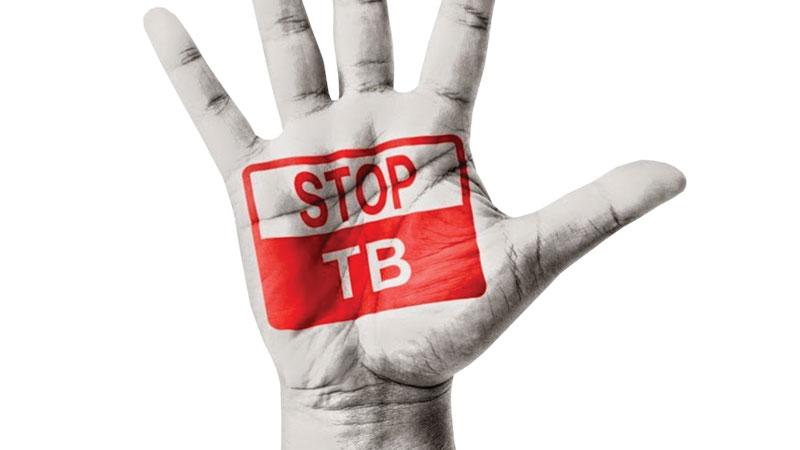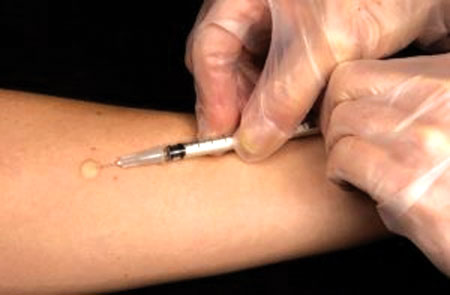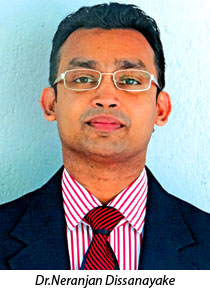
 Tuberculosis has been a challenge to humans since the beginning of mankind. It affects around 10 million people and kills one and a half million each year, of which 150,000 are children. It is one of the top five causes which kills adult women. One third of the world population is postulated to be infected by the organism that causes tuberculosis. In Sri Lanka, around 10,000 people are diagnosed each year, of whom 600 die.
Tuberculosis has been a challenge to humans since the beginning of mankind. It affects around 10 million people and kills one and a half million each year, of which 150,000 are children. It is one of the top five causes which kills adult women. One third of the world population is postulated to be infected by the organism that causes tuberculosis. In Sri Lanka, around 10,000 people are diagnosed each year, of whom 600 die.
The battle to stop the spread of TB, called the white plague in the early 19th century, began when the disease wiped out millions of people, especially, in countries with cold climates. Its spread was finally stopped in its track when Prof. Robert Koch discovered the TB bacteria, “mycobacteria tuberculosis” an air borne bacteria.
The vast strides in medical science has made this highly infectious disease, preventable, treatable and curable. The key is early diagnosis and early presentation by the patients, when they suffer from a persistent cough or sudden weight loss.
March 24 is a very special day for the world Tuberculosis community. It commemorates the day that Robert Koch, the eminent German scientist who discovered the causative organism of this deadly disease, presented his findings to the world, for the first time.
The “World Tuberculosis Day” gives an opportunity to reflect on our achievements and plan ahead to face the emerging challenges.
The Sunday Observer spoke to Dr.Neranjan Dissanayake, Consultant Respiratory Physician, Provincial General Hospital and District Chest Clinic, Badulla, for insight into the disease.
Excerpts:
 Q. What is tuberculosis?
Q. What is tuberculosis?
Tuberculosis is an infectious disease caused by bacteria belonging to the “Mycobacterium tuberculosis complex”. It is a chronic infection that can affect any organ or system; hence, named as a “great mimicker”, and presenting in many different faces to many disciplines of medicine. But, the lungs bear the majority of the disease burden.
Q. Why is it named as “Tuberculosis”?
When the people who died of the disease were dissected, scientists noticed the many small nodules, “tubercles” that were present in the affected organs. These nodules are the hallmark of the disease.
Q. How does one get Tuberculosis?
The organism is spread by tiny particles in the air that are released by a person who has tuberculosis in the lung, air way or voice box; hence, it is termed as an “air borne” disease. They release bacteria when they cough, sneeze or talk.
A majority of the bacteria that enters our lungs are destroyed or contained by our body defence systems. In a minority, it causes the disease at this stage, named, “primary tuberculosis” . In the people in whom the bacteria is “contained” there will be no evidence of disease. This stage is named as “Latent tuberculosis”. When the ability of our body to contain the bacteria is weakened, it may lead to the stage of “secondary tuberculosis”.
There is also evidence of tuberculosis being transmitted from the mother to the unborn child in utero.
Q. When should we suspect “Tuberculosis”?
As I mentioned above, Tuberculosis can affect any system of our body. The symptoms will depend on the organ that is affected.
Generally, they have a loss of appetite, loss of weight, tiredness and mild fever that can be affected with sweating in the nights.
When the lungs are affected; cough that will be present for weeks with or without blood and breathlessness may be a feature.
When the covering of the lung, “pleura” is involved they could get a pain in the side of the chest wall, which will increase on breathing.
When tuberculosis affects the spine, they could get a chronic back pain.
A chronic headache, red eye , skin change, recurring urine infection, non-healing ulcers, are some of the many ways that tuberculosis can present. Hence, it is very important that appropriate expertise be consulted depending on the symptoms, as early diagnosis is the key to its management.
Q. What can a person do when he suspects that he is has Tuberculosis?
The best thing is to present yourself to the District Chest Clinic. District Chest Clinics are situated in all districts. You do not need a referral. You can come directly to the closest clinic and register yourself.
Then, a doctor will assess you and arrange to have investigations. It will usually include a collection of samples of phlegm, a chest X ray and some blood tests. Sometimes, they will arrange to have a skin test called mantoux, which will be looked at in 3 days after the procedure.
Depending on the results and your suspected site of tuberculosis, the investigations will differ. Further management and investigations will usually be done with the consensus of the Consultant Respiratory Physician.
If you are not living near a Chest Clinic, you can always come to the OPD of any hospital and describe your symptoms.
Then, the doctors will do the needful.
Q. What are the different categories of tuberculosis?
There are many ways in which you categorize tuberculosis. The one used mainly is according to the site of infection.
When the substance of the lung or the air way is involved we call it, “Pulmonary tuberculosis”.
All other sites are lumped in as, “Extra pulmonary tuberculosis”, and are named accordingly (e.g: TB of Lymph nodes, TB of spine etc…,) If the tuberculosis bacilli is visible after the special staining in your sputum sample, then it is labelled as “smear positive pulmonary TB”; which has the highest capacity of spreading the disease to another person.
Q. How do you treat Tuberculosis?
Unlike other bacteria, the tuberculosis bacilli are difficult to treat. It resides in different forms and in different sites inside our body. It has the capacity to withstand and resist antibiotics. Hence, it has to be treated for a long time, usually 6 moths to one year, depending on the site and whether one has been treated for tuberculosis before.
